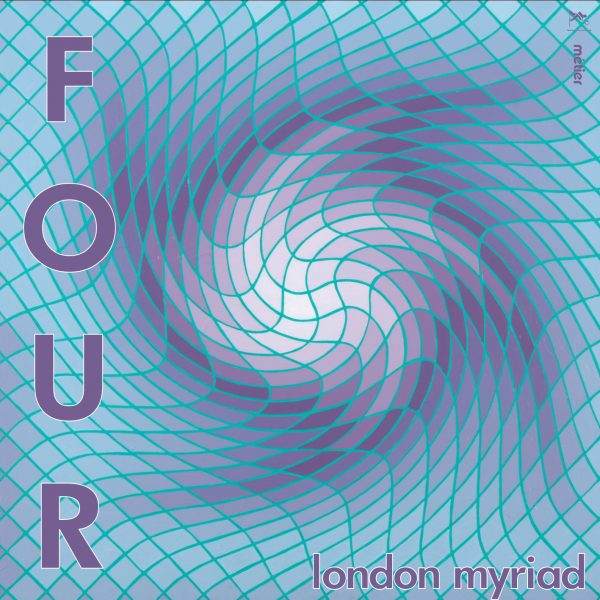Fanfare
The wind quartet has long been marginalized in favor of its slightly augmented sister, the wind quintet. Here is a disc that sets out to bring our attention to the wind quartet repertoire. It is also the first of a pair of discs, the second of which will present new repertoire for this combination.
The name of Eugene Bozza is probably best known to flute players. His charmingly named Trois pieces pour une musique de nuit (1954) is, in fact, just as charming sonically, a lilting Andantino using the simplest of means to maximal effect (the oboe’s imitative entrance in the closing measures, for instance), a sprightly scherzo whose theme could not be more French if it tried (is that an affectionate nod to the Scherzo of Beethoven’s Ninth at the end?), and a closing chorale Moderato that is most eloquently done here. The players are fabulous, with perhaps an especial nod to oboist Fiona-Joyce Myall for her suave phrasing and negotiation of tricky passages.
The characteristic English harmonies of Frank Bridge’s Divertimenti act in fine contrast. Published in 1938, the piece was written shortly after a heart attack. Intriguingly and perhaps counter-intuitively, the Prelude is the longest movement. It indeed has a lovely unhurried demeanor. The ensuing Nocturne is an expansion from a 1934 sketch for oboe and flute. It dares to thin textures down to nothing before a small Scherzetto, with its prominent part for bassoon (humorously taken by Ashley Myall) leads to the final, playful Bagatelle. The reactions of London Myriad are astonishing; the music, as a result, full of joie de vivre.
The irrepressible spirits of Jean Françaix are in full display in his Quatuor. Written at the age of 21 as a competition piece, beautifully spiky staccato from all concerned in the first movement en¬livens the musical surface before the spirit of the dance emerges; gentilité of the highest order suffuses the melody of the Andante, while Ashley Myall’s jaunty bassoon enlivens the playful third movement. Woodpecker staccato is the defining characteristic of the finale, which should tell you all you need to know of its character. All credit to London Myriad for maintaining the sense of fun so strongly in the recording studio.
Richard Rodney Bennett must have had what might be called an “easy pen,” in that his music always seems to flow beautifully and naturally. That certainly is the case with his Travel Notes 2, with its chattering helicopter (second movement, “In a helicopter”). The first set of these, for string quartet, had included a movement called “In a hearse.” There’s nothing quite so morose here, just an air balloon, a restrained and calm bath-chair and, finally, a more animated, cartoony car chase (where the virtuosity of all is clearly on display).
Originally scored for two flutes, clarinet and bassoon, Ibert’s Deux Mouvements—MCMXXII is full of that composer’s zest for life, impeccably Gallic, with any passing clouds summarily dis-missed. London Myriad captures the heart of this with a spring in their step. (Who said the English do not understand the French?)
Completed in 1979, Claude Arrieu’s Suite en quatre is intriguing. She first of all introduces the wind voices one by one before steering them towards a chorale. The third movement is beautiful in its harmonic make-up, while again it is Arrieu’s unique way with piquant harmony that enlivens the finale.
Merely to give the reader an idea of the music here, I reviewed this on a Sunday morning, and it turned out to be the perfect music for that time of the week. Delicious, frothy and delightful music is performed impeccably by London Myriad.
@divineartrecordingsgroup
A First Inversion Company
Registered Office:
176-178 Pontefract Road, Cudworth, Barnsley S72 8BE
+44 1226 596703
Fort Worth, TX 76110
+1.682.233.4978










![Listen to the full suite of Marcel Dupré’s Variations Sur un Noël, Op. 20 from Alexander Ffinch’s #Expectations release today! listn.fm/expectations [in bio]](https://scontent-dfw5-1.cdninstagram.com/v/t51.71878-15/588904367_2327488161082898_8709236950834211856_n.jpg?stp=dst-jpg_e35_tt6&_nc_cat=105&ccb=7-5&_nc_sid=18de74&efg=eyJlZmdfdGFnIjoiQ0xJUFMuYmVzdF9pbWFnZV91cmxnZW4uQzMifQ%3D%3D&_nc_ohc=AiUKMpkx7d0Q7kNvwGGzF4A&_nc_oc=AdkXZoNG_aC5XlImpsh5RnvRT-FstV4-TdHX1TQvASqHP56721gdCuA_DWR1ACeCz32jhDMpJi8tQ0kwbGjwVA2V&_nc_zt=23&_nc_ht=scontent-dfw5-1.cdninstagram.com&edm=ANo9K5cEAAAA&_nc_gid=WDs0zosp4eS4uVSbpNu4YQ&oh=00_AfnDxCwBSovVpVGX3ZvqqwBGOjEbcFAM4oT16txwrmBcKg&oe=6950CBEA)

![“the ‘Manteca’ Paraphrase – a rare foray into the two-piano medium but here played double-tracked – exudes a panache of which Dizzy Gillespie would surely have approved.… [a] recital well worth investigating.” —Gramophone Magazine with high praise for Ophelia Gordon's debut release, Kapustin: Between the Lines!](https://scontent-dfw5-3.cdninstagram.com/v/t51.82787-15/598796470_18303255136283342_540941604740887837_n.jpg?stp=dst-jpg_e35_tt6&_nc_cat=108&ccb=7-5&_nc_sid=18de74&efg=eyJlZmdfdGFnIjoiRkVFRC5iZXN0X2ltYWdlX3VybGdlbi5DMyJ9&_nc_ohc=qJeKeEK7ScQQ7kNvwEX0AD9&_nc_oc=Adm5n0E9HX-UrpRkUbhNaNaNlvX51iMZXwHkJA9-vJBfrtosWdxbK0l43aooOgQR8uPqB1TSoTAiuPJOs4XwSeJ7&_nc_zt=23&_nc_ht=scontent-dfw5-3.cdninstagram.com&edm=ANo9K5cEAAAA&_nc_gid=WDs0zosp4eS4uVSbpNu4YQ&oh=00_AfmRvqvOc8V0flycY76XpHX29ZSyYBTUPz3fOSDam0Mm0g&oe=6950A644)